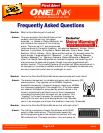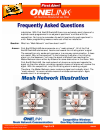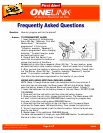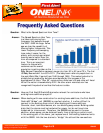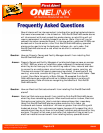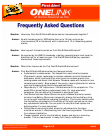
Page 2 of 9 CM2837
**Interconnected alarms provide added
warning as compared to single alarms.
WIRELESS
Competitive Dip Switches
Question: What is Voice Warning with Location?
Answer: This is an exclusive First Alert® feature that
verbally identifies not only the danger
detected, i.e. Smoke or Carbon Monoxide, but
also indicates the location of the initiating
alarm. There are up to 11 pre-programmed
locations stored in the alarm’s memory. Included are Basement, Kitchen, Child’s
Bedroom, Living Room, Dining Room, Master Bedroom, Family Room, Guest
Bedroom, Office, Hallway, Utility Room and No Location. For example when the
alarm sounds, if programmed for “Basement”, it will say “Warning, Evacuate,
Smoke in Basement” or “Warning, Evacuate, Carbon Monoxide in Basement”. If
other First Alert® OneLink® alarms are located throughout the house they will
also announce the same warning even though they were programmed with
another location. This is a safety feature no one else has. When seconds count in
an emergency it provides an audible indication of the possible threatened area
and more importantly what area to investigate or avoid.
Question: How do the First Alert® OneLink® alarms communicate with each other?
Answer: The alarms interconnect via reliable and secure radio frequency (RF)
communication. They operate on the 915MHz frequency
bandwidth and employ 3 channel frequency hopping vs. 433MHz
non frequency hopping with the competition. If for some reason
one channel is blocked or being used by another device in the
home it automatically switches to one of three frequencies
increasing the chance that the signal will be received. This
“hopping” to the next frequency to complete the signal vs.
waiting for the next send cycle saves precious time. Seconds
count in an emergency as a home fire doubles in size every 30 seconds.
Question: How do the First Alert® OneLink® alarms link with each other?
Answer: The linking is automatic through the software with 65,000
security code combinations. This eliminates manual dip
switch programming as on the competitive product with only
255 combinations. This saves confusion, time and money on




